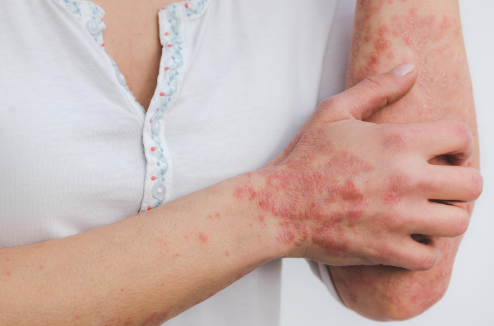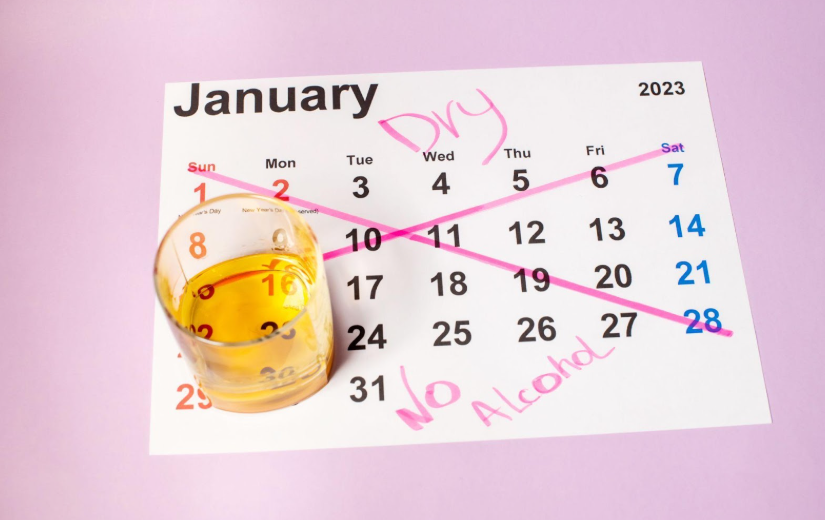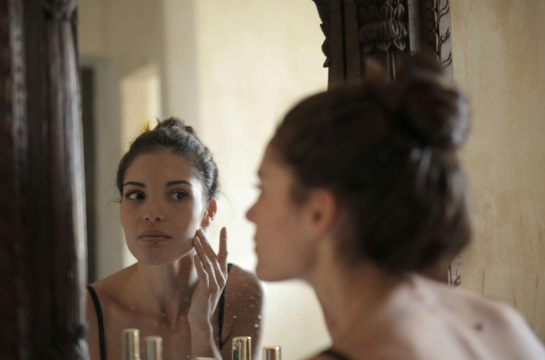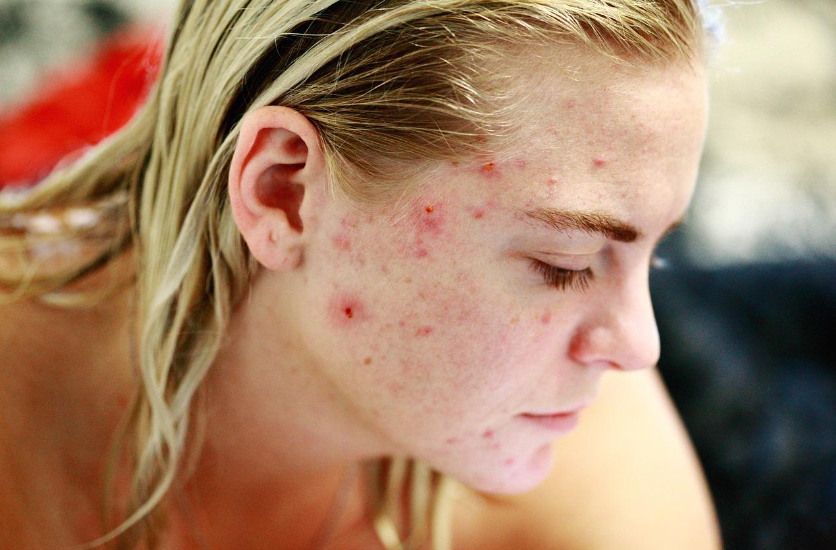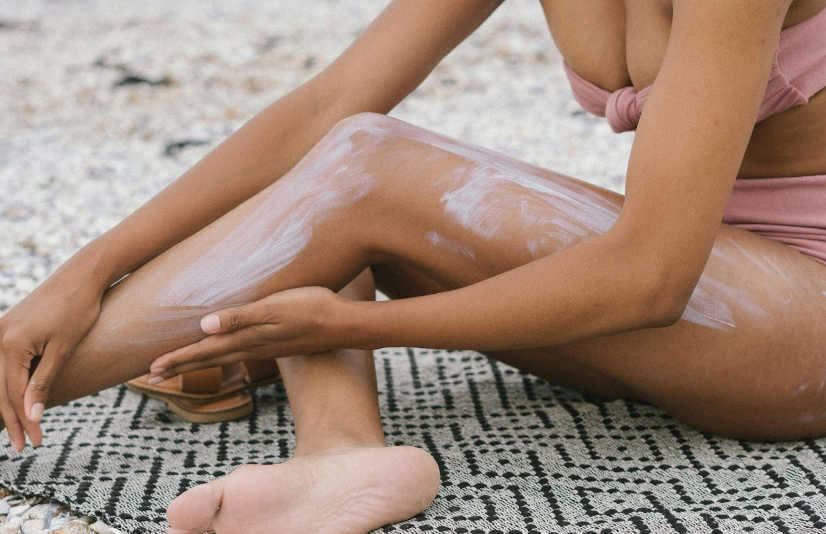Cold Sores vs. Pimples: What's the Difference?
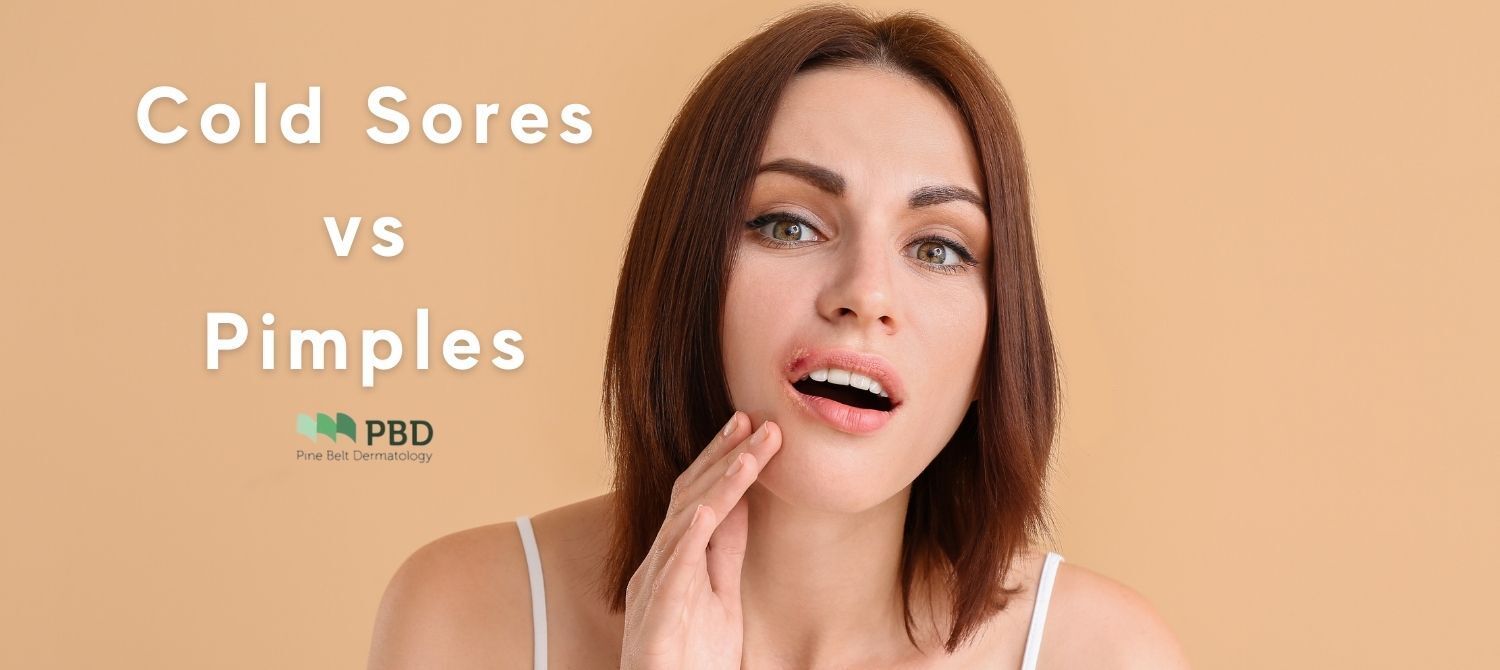
A red bump on your lip line is enough to make even the most stoic person go into panic mode, and Google doesn't provide the most reassuring resource when it comes to figuring out whether it's a pimple or a cold sore. Despite being completely different skin problems, they can initially appear very similar.
Stop scanning Google Images and take a deep breath. This article will help you finally get to the bottom of the cold sore versus pimple debate, plus how to tell which one you have and how to get rid of them both.
What is a Pimple?
It’s time to learn what’s really going on under the surface of your skin. A pimple is caused when bacteria, dead skin cells, and oil are trapped behind the hair follicle, producing an inflammatory response and causing a zit.
The unfortunate truth is that everyone will experience pimples, which can occur anywhere on your body that has hair follicles (that includes the palms of your hands and the bottoms of your feet). And it turns out that the lip area has hair follicles. Stress, sun, and trauma can also cause pimples to appear, but unlike cold sores, they are not caused by viral infections.
What is a Cold Sore?
The virus responsible for cold sores is the herpes simplex virus, which is the same virus that causes genital herpes—and can be caused by HSV-1 (the strain most closely related to cold sores) or HSV-2 (the strain more closely related to genital herpes). The virus typically lays dormant in the underlying nerve, though a flare-up can be triggered by stress, sun, fevers, or other external factors.
HSV is highly contagious, and it's spread through skin-to-skin contact, like kissing or drinking after a person with active lesions, touching the person's skin, or sharing silverware, lip balms, or razors. Despite their stigma, cold sores are in fact quite common. According to the World Health Organization (WHO), an estimated 3.7 billion people under the age of 50 have HSV-1 (around 67% of the global population).
For some, the virus may lay dormant entirely. You may have contracted the virus as a child after sharing a drink with a friend and not even know it. That’s why it’s important to note that some people can be contagious even without an active outbreak—a condition known as “asymptomatic viral shedding.” That shouldn’t scare you from kissing your partner or sharing lip gloss with a friend—you may even be the individual with the dormant virus—but it is still important to be cautious nonetheless.
How to Spot a Pimple
A pimple may feel like it's there before it's visible. The area just under the skin may be tender, or you may feel a lump under the skin. Sometimes, pimples appear without warning. You may go to sleep one night and wake up the next with a big zit. A pimple can be distinguished from a cold sore by:
● Can develop anywhere.
It is not uncommon for pimples to develop across the entire face, including the lip line. When pimples appear on the lip's edge, they can easily be misinterpreted as a cold sore, especially when they're in the early stages.
● Looks like a bump.
A pimple forms a red bump, rather than a blister. A whitehead may develop at the peak of the red bump as the pimple progresses. It is still undoubtedly not a blister. The majority of pimples have a single whitehead, but some become so large that they develop multiple heads.
● Not contagious.
Acne cannot be spread from person to person. Cold sores are contagious, but pimples are not. Thus, you can hug and kiss someone with a pimple without getting a pimple yourself.
How to Spot a Cold Sore
You may notice a lot of similarities between cold sores and pimples as they form. People often feel nothing when they form pimples or cold sores, but others may feel tingling during their development. However, the similarities end with their tingling sensation. The bump on your face may be a cold sore include:
● There is a cluster of blisters.
Cold sores form blister clusters. A pimple and a cold sore can be distinguished by their appearance. Cold sores are characterized by tiny, red blisters. When the blisters burst, they can ooze fluid.
● Develop in specific places.
Cold sores typically develop around the lips, nose and nostrils, chin, and (less commonly) eyes. Cold sores commonly appear around the mouth, just below the lip on the chin, or between the mouth and nose. They may also appear directly on the lips. This is a sign that it could be a cold sore, but only your physician can tell you for sure.
● Tingle or burn.
Cold sores tingle or burn. Your skin may itch or tingle in the days or hours before you develop a cold sore. It can, however, become painful as a cold sore grows and might throb or burn.
● Are crusted over.
A cold sore blister crusts over after several days. When a cold sore dries, it may crack and ooze.
● Develop after close contact with someone who has or had HSV-1.
Cold sores are contagious. People spread HSV-1 by kissing, sharing utensils, and drinking from the same cup. While it is more commonly transmitted sexually, HSV-2 is also capable of infecting the face.
How Do You Get Rid of Pimples?
Pimples aren't contagious, so you can't spread them to other people or other parts of your body. You can rest assured that the zit will begin to heal within a few days. The easiest way to get rid of unsightly pimples is to develop a reliable skincare regimen. This regimen could include topical, but it can also mean reducing stress and optimizing your lifestyle habits to prevent acne flare-ups.
Here are some tips to help you battle pimples:
● Do not pick or pop your pimple.
Squeezing or picking at your pimples can make the blemish much more, and can also cause scarring that can follow you into your adult years.
● Use ice on large or painful sections.
Take an ice cube and wrap it in a soft cloth. Hold it over the pimple for several minutes. This can help reduce swelling and ease the pain if you do it a few times per day.
● Apply over-the-counter spot treatments to individual pimples.
In most cases of mild acne, over-the-counter products that contain salicylic acid, benzoyl peroxide, and retinol are sufficient. The products work by killing bacteria, drying excess oil, and shedding dead skin cells by exfoliating.
● Take daily acne treatment medication.
If you have nodular or cystic acne, you may benefit from medication. You have to see a dermatologist to clear up this type of severe acne (moreover, picking or popping nodules and cysts can lead to scars). Effective acne treatments (such as Accutane) will stop pimples before they form. Using these can help clear your skin long-term.
Pine Belt Dermatology uses a Co2 Fractional Laser against acne scars by using light energy to target water in the tissue.
How Do You Get Rid of Cold Sores?
Perhaps you've tried mostly ineffective, over-the-counter products to treat your cold sore in the past. Unfortunately, there is no one-and-done cure for cold sores. However, there are a few tips you can use to cope with a cold sore and prevent further spreading:
● Avoid touching your cold sore.
Remember that the cold sore virus is contagious. So, touching your sore can spread the virus to other people or other areas of your body without you noticing.
● Don’t pop your cold sore.
It won’t help the sore heal any faster, and can actually make the breakout worse.
● Apply a cold compress and take an oral pain reliever.
The majority of cold sores will heal by themselves. But it usually takes up to two weeks. Treatments such as Abreva, and applying a cold compress can help reduce this healing time.
● Use prescription medication.
To cope with cold sore outbreaks, your healthcare provider may prescribe medications. Antiviral medications must be taken at the very start of a breakout to be effective. They can reduce severity and healing time significantly.
● Keep moisturized.
If you have a cold sore that is crusted and dry, you can apply a balm to keep the sore moist. Moisture prevents painful splitting. Balms and salves should be applied with a cotton swab rather than your fingers.
● Avoid contamination.
Keep your product free of contamination by always using a fresh cotton swab (don't double-dip). To avoid contaminating the balm and prolonging the problem, always wash your hands before touching it again.
The Bottom Line
There are some similarities between painful pimples and cold sores—both can lead to low self-esteem, and both can be painful. But in terms of treatment, they require totally different approaches; that's why it's so important to recognize which flare you really have. If you're still not convinced, consult your dermatologist—especially if it's spreading or doesn't seem to be improving. Pimples and cold sores don't have to be so frightening; with the right treatments, you'll have clear skin in no time.
And if nothing you’re doing at home is making a difference, contact the experts at Pine Belt Dermatology to discuss your skincare options. No matter what problems you’re having, with a little TLC, you’ll be left feeling like yourself again.
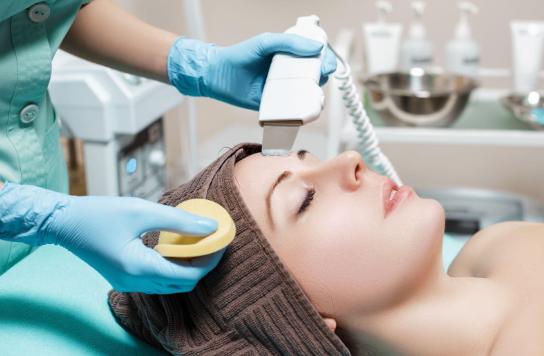
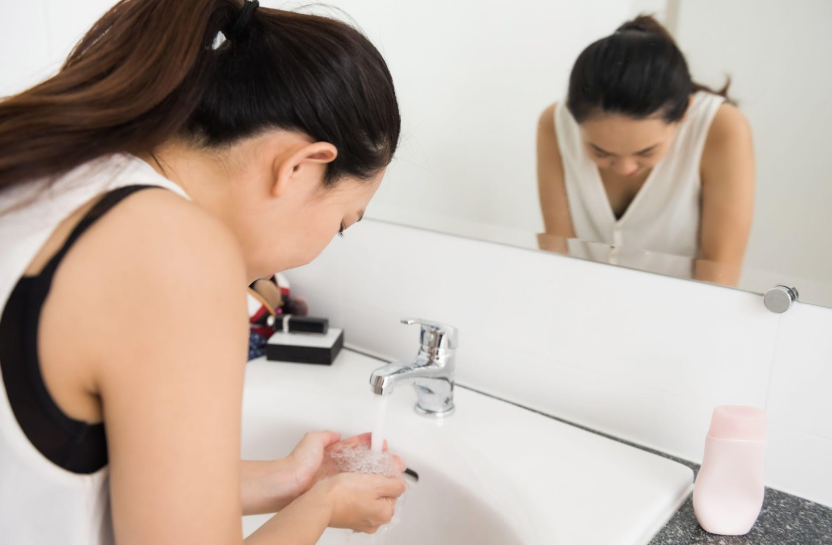

Petal Office
Phone:
Fax:
601-336-7826
Address:
Hours of Operation:
Mon-Fri: 8:00am to 4:30pm
Hattiesburg Office
Phone:
Fax:
601-475-9969
Address:
Hours of Operation:
Mon-Fri: 8:00am to 4:30pm
Ellisville Office
Biloxi Office
Phone:
Fax:
228-232-0874
Address:
1009 Tommy Munro Drive, Suite A
Hours of Operation:
Mon-Fri: 8:00am to 4:30pm
Ocean Springs Office
All Rights Reserved | Pine Belt Dermatology

